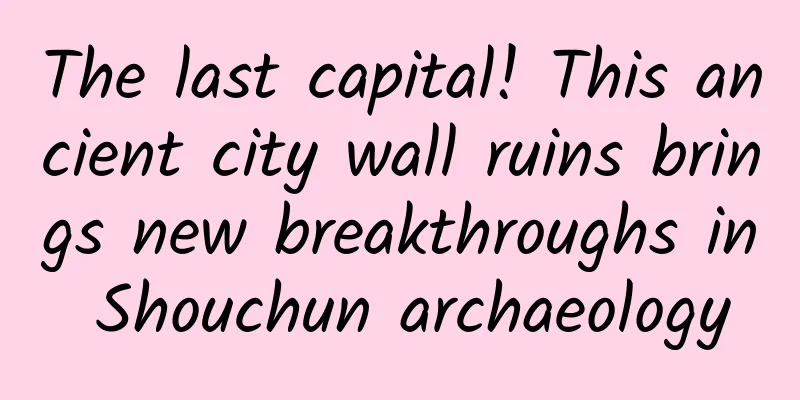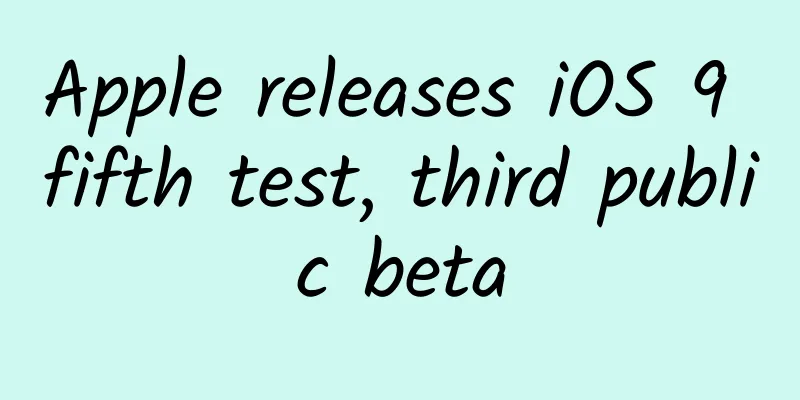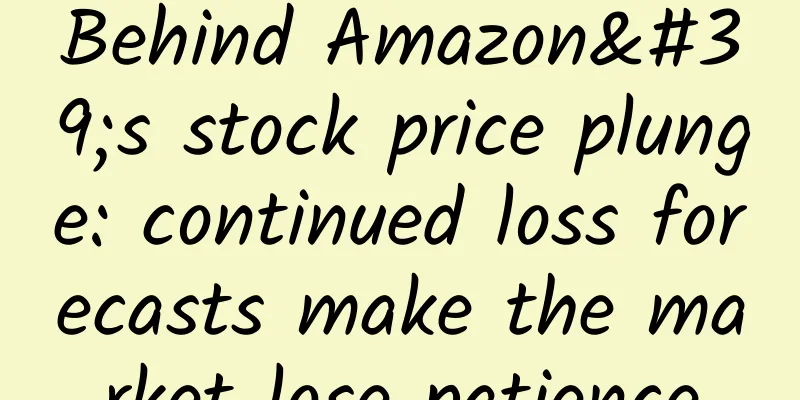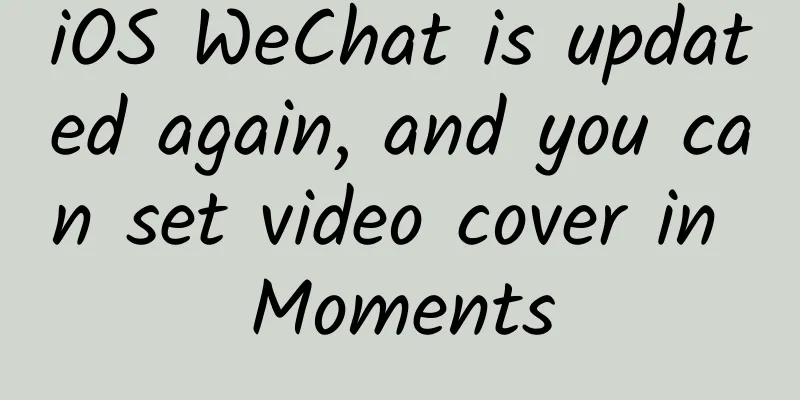The last capital! This ancient city wall ruins brings new breakthroughs in Shouchun archaeology

|
Recently, in an open area on the south side of Chudu Avenue in Shou County, Anhui Province, several exploration areas are in order and archaeological excavation work is in full swing. According to historical records, Shou County has long served as the capital and the seat of the county, state, road and prefecture since the Chu State moved its capital to Shouchun, and has been known as "a capital four times and a county ten times". Today, the old county town of Shou County still retains the urban layout of the Tang and Song Dynasties and the traces of the repair and expansion of the city wall since the Song Dynasty, becoming a microcosm of the construction and development of Shou County's city and city wall after the Tang and Song Dynasties. However, as the last capital of the Chu State, there have been different opinions on the exact scope of Shouchun City for a long time. Nearly 40 years of "searching for the city" Zhang Yizhong, director of the Shou County Central Station of the Anhui Provincial Institute of Cultural Relics and Archaeology and person in charge of the archaeological excavation project of the Shouchun City ruins, said that the view that "Shouchun City was the last capital of the Chu State in the late Warring States Period and its geographical location was in and near the city gate of Shou County, Anhui Province today" has now become a consensus in the academic community. In ancient times, city walls, especially outer walls, were extremely important defensive fortifications, and their construction required a lot of manpower, material resources, and financial support. As the capital of the Chu State, Shouchun City Wall was responsible for guarding the safety of the capital. Zhang Yizhong introduced that since the scientific excavation of the Shouchun City Ruins started in 1983, the exploration and confirmation of the city wall has always been the focus and core of the work. After nearly 40 years of hard exploration by two generations of archaeologists, two different views have been formed in stages around the Shouchun City Wall. The first view is represented by Mr. Ding Bangjun, the first leader of the Shouchun City Ruins archaeological team. In 1983, the Anhui Provincial Institute of Cultural Relics and Archaeology and the Shou County Cultural Relics Department jointly formed a working group to carry out planned archaeological work on the Shouchun City Ruins. The working team used archaeological surveys, drilling, trial excavations and remote sensing surveys. By 1991, the Baijiatai building foundation was discovered, and the location and scope of the Shouchun City site were determined. It is speculated that the outer city of Shouchun City is about 6.2 kilometers long from north to south and about 4.25 kilometers wide from east to west, with a total area of about 26.35 square kilometers. However, the academic community has also raised some doubts about this view. The capital of Chu during its heyday, Ji'nan City, only had an area of 16 square kilometers. Shouchun City was the last capital of Chu. At that time, the country was weak, so it is unreasonable for its area to exceed Ji'nan City. From 2000 to 2003, the Anhui Provincial Institute of Cultural Relics and Archaeology and the School of Archaeology and Museum Studies of Peking University formed a joint archaeological team to restart the archaeological work of the Shouchun City Ruins. Through a series of investigations, drilling and trial excavations, they basically denied the remains of the outer city walls obtained through remote sensing interpretation in the previous stage. Zhang Zhongyun, the second leader of the Shouchun City Ruins Archaeological Team, believes that the palace city of Chu Shouchun City is within the scope of the foundation of the Shou County city wall today, and the existing Southern Song Dynasty city wall was formed by the superposition of Xiacai, Chu Capital Shouchun, Han, Tang and Song dynasties. However, this view still needs more archaeological data to prove and support it. Small town in southwest China "breaks the impasse" The unresolved issue of the city wall of Shouchun City Ruins has always been a bottleneck problem restricting the research, protection and utilization of the ruins. In recent years, the archaeological team of Shouchun City Ruins has turned its attention to the periphery of Shouchun City Ruins, and the ruins of the southwestern small city have entered the sight of archaeologists. The Southwest Small City Ruins are named because they are located southwest of the Shouchun City Ruins. They are comparable in size to the Fengjun City of the Chu State, and are very close to the Shouchun City Ruins and roughly the same age. Therefore, they play a vital role in exploring and ultimately solving the problem of the city walls of the Shouchun City Ruins. In 2021, with the approval of the State Administration of Cultural Heritage, the Anhui Provincial Institute of Cultural Relics and Archaeology, in conjunction with the Shou County Cultural Relics Protection Center, conducted a systematic investigation, exploration, and proactive archaeological excavation of the Southwest Small City Ruins, hoping that this series of archaeological work will provide useful clues, references, and breakthroughs for exploring the problem of the city walls of the Shouchun City Ruins. Archaeological work results show that the southwest city is roughly square with rounded corners, with an area of about 104,000 square meters inside the city and an area of about 253,000 square meters including the moat. The east and north walls of the city are the best preserved, with the remaining wall width ranging from about 21.6 to 35.6 meters and the remaining height exceeding 2 meters. There is a moat surrounding the city wall, with a width of 40 to 50 meters. The northeast corner of the city river is connected to Shouchun City through an artificial river channel, while the southwest and southeast corners are connected to the natural river channel, and finally flow westward and southward into the Huaihe River, with a clear waterway pattern. Most of the unearthed artifacts are building materials such as tubular tiles and flat tiles. Among them, the fragments of square-shaped triangular-patterned grooved bricks and square-patterned floor tiles with a grid pattern are also found in the high-level building foundation site of Baijiatai. Zhang Yizhong said that Baijiatai is believed to be the foundation site of a palace in the late Chu State. The site used a large number of grooved bricks, floor tiles, tiles with phoenix patterns and other building components. The fact that such exquisite building components could be used on a large scale more than 2,000 years ago reflects the large scale and high level of the building from another perspective. What function does the Southwest Small Town have? During the first investigation in 1986, Mr. Ding Bangjun, the then archaeological leader, inferred that the city site was the residence of Huang Xie, the Prime Minister of Chu during the Warring States Period, based on the characteristics of the collected relics and relevant literature records. Today, "Chunshen's Hometown" has become a city name card of Shou County. In history, Huang Xie was a man of outstanding talent, and was ranked as one of the four nobles of the Warring States Period. He helped Xiong Wan, the King of Chu who was still a hostage in Qin State, escape back to Chu State and ascend the throne. After King of Chu ascended the throne, he appointed Huang Xie as prime minister, named him Lord Chunshen, and granted him 12 counties in the north of Huai River, including Shouchun. Before Chu moved its capital, Huang Xie had been working hard in Shouchun for many years. Although Chu had already weakened in the late Warring States period, relocating the capital was a matter of great importance, so the location selection must have been extremely cautious. Zhang Yizhong introduced that Shou County has a superior geographical location, with Bagong Mountain in the north, the main channel of the Huai River in the west, and the Dongfei River and its barrier lake, Wabu Lake, in the east. Only the southern part is open and flat, with no natural barriers to defend. The Southwest Town is located in the southwest of the Shouchun City Ruins, and is connected to Shouchun City by water, with convenient transportation, which can protect Shouchun City. In addition, archaeological work shows that the four gates of the southwest city are roughly the same size. The upper opening of the north gate confirmed by excavation is 3.2 to 4 meters wide, the lower opening is generally less than 1 meter wide, and the narrowest is only about 0.5 meters wide. "Such a small gate can hardly meet the daily living and travel needs of an important official of the Chu State. Judging from the accumulation inside and outside the city, the southwest city does not seem to be a long-term residence." Therefore, Zhang Yizhong believed that the military use of the southwestern town was more obvious, and it might be a satellite town to protect Shouchun City. "Chu City" makes a stunning appearance The archaeological excavation of the ruins of the small southwestern city has enhanced the understanding and research of the city sites and city walls of the late Chu State, and also brought hope for the continued search for the city walls of Shouchun City. In November 2021, during the exploration of the construction site on the south side of Shou County Traditional Chinese Medicine Hospital, archaeologists accidentally discovered a section of rammed earth wall foundation running east-west. Its ramming method was similar to that of the southwestern small city and its age was roughly the same. Through further investigation, a wall relic with a roughly oblique rectangular plane and a total area of about 569,000 square meters was discovered. Because it is located in Shoubin Village, Shouchun Town, Shou County, it is temporarily called "Shoubin Ancient City." This discovery made the archaeologists very excited. Could this section of wall foundation be the city wall of Shouchun, the capital of Chu in the late Warring States Period? In order to verify the existence of the rammed earth wall foundation and determine its age and nature, from December 2022 to June 2023, with the approval of the State Administration of Cultural Heritage, the Anhui Provincial Institute of Cultural Relics and Archaeology carried out an anatomical excavation of the north wall of Shoubin Ancient City. As the excavation work progressed, a wall from the late Warring States Period made a stunning appearance. The date is the late Warring States Period, and it is consistent with the historical background of Chu's relocation to Shouchun. The newly discovered city wall is the city wall of Chu. Zhang Yizhong introduced that the archaeological discovery of Shoubin Ancient City filled the blank of the city wall remains of Shouchun City Ruins in the late Warring States Period, which is an important breakthrough in the archaeological discovery of Shouchun City Ruins. The west wall of the newly discovered city wall remains continues to extend north and south, and in addition to the wall of the late Warring States Period, there are signs of additional construction, supplementary construction and reconstruction in the late Eastern Han Dynasty, indicating that the city wall was still in use until the Eastern Han Dynasty. This discovery further connects the city wall specimens before the Tang and Song Dynasties, forming a situation where city wall specimens from many different periods, such as the late Warring States Period, the late Eastern Han Dynasty, the Tang and Song Dynasties to the Ming and Qing Dynasties, coexist. Shou County is worthy of the title of "City Wall Museum". The total area is about 14.6 square kilometers The Chu city wall has been discovered, but the location and scope of the outer city wall of Shouchun City remain undetermined. In previous explorations, archaeologists discovered that the western wall of Shoubin Ancient City continued to extend north and south beyond the scope of the ancient city. Based on this clue, in August 2023, the archaeological team of the Shouchun City Ruins launched an active and comprehensive search, continuing to explore southward and northward along the west wall of the Shoubin Ancient City, and at the same time taking the method of drilling holes in the shape of a "well" around the building foundation of Baijiatai to find the rammed earth wall. "The exploration has intermittently discovered some city wall remains. By connecting these city wall remains, we have preliminarily framed the scope of the suspected outer city of Shouchun City." Zhang Yizhong introduced that the suspected outer city shares a part of the west wall with the Shoubin Ancient City, extending to Chudu Avenue in the south, near the Xiaosongjiatai site in the north, and to the west bank of the Feishui River in the east, with a total area of about 14.6 square kilometers. This area is smaller than the Jinan City of Yingdu, and its shape is also irregular. Zhang Yizhong said that this is the result of preliminary exploration, and the precise scope and area still need to be verified and confirmed through further archaeological excavation. Shouchun is located in the Huai River and Ru River, and controls the Yellow River and Luo River. It has an excellent geographical location and has been a strategic location throughout the ages. According to historical records, before the Chu State moved its capital to Shouchun, under the years of painstaking management of Chunshen Jun, Shouchun had become a military fortress, shipbuilding center, and commercial metropolis of the Chu State at that time. Recently, archaeologists have discovered new rammed earth platforms and city wall remains south of Chudu Avenue. Archaeological work around the Shouchun City site is still in full swing. Zhang Yizhong said that in the next step of archaeological work, the city wall issue will remain the focus and core. The archaeological team plans to further dissect and confirm the scope of the outer city of Shouchun City that has been initially determined through coordinated and proactive archaeological excavations. The archaeological excavation results of the Shouchun City site over the past decades will also be sorted out and announced to the world in the form of interim results. As the archaeological work at the Shouchun City ruins progresses, more unknowns and speculations about the 800-year-old Chu State are expected to be answered. Liu Yuanyuan Wang Shilong |
>>: Don't buy this kind of bread for breakfast, it has more calories than fried chicken
Recommend
Behind the ban on Kuaishou: the crisis and fear of the WeChat platform
After a few days of hesitation, WeChat gave the r...
A complete set of Android asynchronous task classes
[[123542]] Today I would like to introduce a very...
Don’t buy the fruit slices sold at the roadside for 15 yuan a box!
Source: Dr. Curious The cover image and the image...
[2016 latest edition] A complete list of professional terms in the mobile Internet industry!
Mobile Internet Professional Level 4 Exam is here...
Boguang Education's "Short Video Editing and Sales All-round Class" from entry to mastery
Boguang Education's "Short Video Editing...
Hu Xia's personal profile: What are the benefits of company SEO optimization? Is corporate SEO necessary?
Nowadays, many companies and enterprises are cond...
From ad images to landing pages, 14 tips to improve conversions
This article is a summary of the book "The B...
New efficacy of artemisinin, promising for treating this common disease
In 2015, Tu Youyou's team won the Nobel Prize...
Why do ancient and distant gamma-ray bursts help explore the early universe?
Astronomers discover ancient, distant gamma-ray b...
How to plan a live e-commerce event
Live streaming began to explode in 2015, sparking...
Talk about the methodology of user operation
In user operation , user operation is the way to ...
Generative AI: A new era for everyone Report
Accenture released the report "Generative AI...
What did the legendary good community do right?
On the evening of June 29, 2016, Qiu Ye, associat...
Methods for attracting new users through event operations!
In recent years, I have seen many user operations...
Tesla will be equipped with LG Chemical's ultra-high nickel battery, and CATL will follow closely
Recently, news from the supply chain revealed tha...









